
Diego Portales University is one of the first private universities founded in Chile and is named after the Chilean statesman Diego Portales.

Sorbonne University is a public research university located in Paris, France. The institution's legacy reaches back to the Middle Ages in 1257 when Sorbonne College was established by Robert de Sorbon as one of the first universities in Europe.
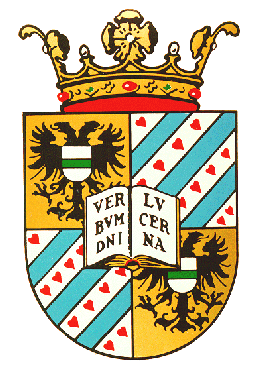
The University of Groningen is a public research university of more than 30,000 students in the city of Groningen in the Netherlands. Founded in 1614, the university is the second oldest in the country and one of the most traditional and prestigious universities in the Netherlands.
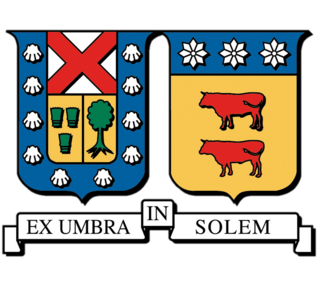
The Federico Santa María Technical University is a Chilean university member of the Rector's Council, founded in 1931 in Valparaíso, Chile.

The University of Santiago, Chile (Usach) is one of the oldest public universities in Chile. The institution was born as Escuela de Artes y Oficios in 1849 by Ignacy Domeyko, under the government of Manuel Bulnes. It became Universidad Técnica del Estado in 1947, with various campuses throughout the country. In 1981, as a consequence of a reform on higher education under the dictatorship of Augusto Pinochet, it became what is now known as Universidad de Santiago de Chile, with all activities centered in a single 340,000 m2 campus in the capital Santiago.

The Pontifical Catholic University of Chile is a traditional private university based in Santiago, Chile. It is one of the thirteen Catholic universities existing in Chilean university system and one of the two pontifical universities in the country, along with the Pontifical Catholic University of Valparaíso. Founded in 1888, it is one of Chile's oldest universities.

The University of Costa Rica is a public university in the Republic of Costa Rica, in Central America. Its main campus, Ciudad Universitaria Rodrigo Facio, is located in San Pedro Montes de Oca, in the province of San José. It is the oldest and largest institution of higher learning in Costa Rica, originally established as the Universidad de Santo Tomás in 1843. Approximately 45,000 students attend UCR throughout the year.

The Pontifical Catholic University of Valparaiso (PUCV), also known as Universidad Católica de Valparaíso (UCV), is one of six Catholic universities in Chile and one of the two pontifical universities in the country, along with the Pontifical Catholic University of Chile. Founded in 1928, it is located in Valparaíso Region and has about 18,000 students.

University of Magallanes (UMAG) is a university in the southern Chilean city of Punta Arenas. It is a public state university and it is part of the Chilean Traditional Universities. The University of Magallanes was established in 1981 during the neoliberal reforms of the Chile's military regime as the successor of Universidad Técnica del Estado's Punta Arenas section. Universidad Técnica del Estado had established the Punta Arenas section in 1961. The University of Magallanes have campuses in Punta Arenas and Puerto Natales as well as a university centre in Puerto Williams. University of Magallanes publishes the humanities and social sciences journal Magallania twice a year.

Universidad de las Américas Puebla, commonly known as UDLAP, is a Mexican private university located in San Andrés Cholula, near Puebla. The university is known for its programs in Finance, Arts and Humanities, Social sciences, Science and Engineering, and Business and Economics. It is considered to be one of the most prestigious universities in Latin America, having been ranked the best private and single-campus university in Mexico by the newspaper El Universal, as well as being one of the only seven universities in Latin America accredited by the Southern Association of Colleges and Schools. The UDLAP has also been very successful in Mexican collegiate sports; their teams are the Aztecas.

The University of Navarra is a private research university located on the southeast border of Pamplona, Spain. It was founded in 1952 by Josemaría Escrivá de Balaguer, the founder of Opus Dei, as a corporate work of the apostolate of Opus Dei. The University of Navarra is among the best private universities in Spain. The University of Navarra is third in the "European Teaching Rankings of 2019" by Times Higher Education's International Rankings.

Universidad San Francisco de Quito USFQ is a liberal-arts, private university located in Quito, Ecuador. It was the first totally private self-financed university in Ecuador and the first liberal-arts institution in the Andean region.

Universidad de los Andes (UANDES) is a private catholic-inspired higher learning institution that carries out non-profit education, research, and assistance activities, and was founded in 1989 in Santiago de Chile by a group of academics and professionals.

The Pontifical Catholic University of Argentina, also known as Catholic University of Argentina, is a private university in Argentina with campuses in the cities of Buenos Aires, Santa Fe, Rosario, Paraná, Mendoza and Pergamino. The main campus is located in Puerto Madero, a modern neighborhood of Buenos Aires.

Universidad Juárez Autónoma de Tabasco is a public institution of higher learning located in Villahermosa, Tabasco, Mexico. The mission of the university is "to prepare professionals with broad and deep expertise in their area of study to fill the needs of Tabasco and the country at large." UJAT is the largest and most prominent university in the state of Tabasco. During the 2007-2008 academic year the university enrolled 35,271 students and had a teaching staff of over 2,000. For the same school year the university offered bachelor's degrees in 36 disciplines, master's degrees in 26 areas, three doctoral degrees, and post-graduate Certificates (Especialidades) in 17 graduate areas of specialization. The university grants law, education, management, engineering, medicine, architecture, nursing, and dentistry degrees, plus some 30 additional degrees in other fields of study.

The Andrés Bello National University is a Chilean private university founded in 1988.
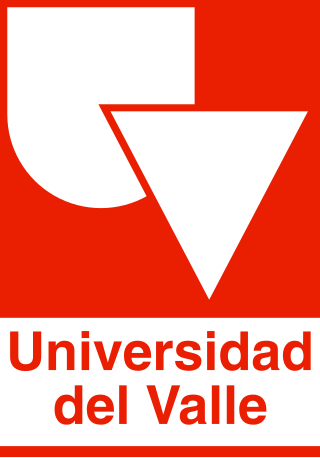
The University of Valle, also called Univalle, is a public, departmental, coeducational, research university based primarily in the city of Cali, Valle del Cauca, Colombia. It is the largest higher education institution by student population in the southwest of the country, and the third in Colombia, with more than 30,000 students. The university was established by ordinance No. 12 of 1945, by the Departmental Assembly as the Industrial University of Valle del Cauca, under the leadership of Tulio Ramírez Rojas and Severo Reyes Gamboa.
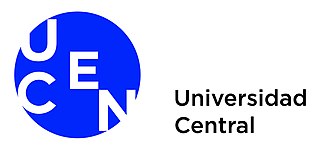
Universidad Central de Chile, abbreviated as UCEN, is the first autonomous private university in Chile, founded in 1982 in Santiago de Chile. It's accredited in the areas of institutional management and undergraduate teaching by the National Accreditation Commission of Chile for a term of four years from December 2017 to December 2021.
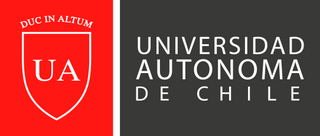
The Universidad Autónoma de Chile (UAutónoma) is a private Chilean university. It has campuses in Temuco, Talca and Santiago.

Universidad Isabel I (ui1), also known as University Isabel I of Castile or University Isabel I, is a private, state-recognized university located in Burgos, Spain which offers studies in business, law, economics, humanities and health science degrees mainly for working professionals and trainees via blended learning and distance learning.






























